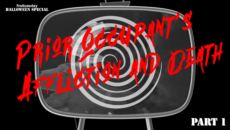See all new real estate laws passed in the 2011-2012 state and 2011 federal legislative sessions.
Topics:
- Maximum gross value increased for transfers of real estate by affidavit or petition of succession
- Approved tentative subdivision map expirations extended 24 months
- Foreclosed apartment conversions to meet low-income housing element
- Broker NHD liability for mine operations limited when relying on expert’s report
- Notice of trustee’s sale to include risk warning and sales schedule data
Reported by Jeffery Marino
This law increases the maximum gross value for real estate transferred by affidavit or petition to the successor of an estate.
Calif. Probate Code § 7660
Amended by A.B. 1305
Effective: January, 1 2012
Maximum gross value increased for transfers of real estate by affidavit or petition of succession
Real estate with a maximum gross value of $50,000 may be transferred by affidavit to the successor of a deceased California property owner’s estate, thus avoiding probate.
The real estate interest included in a total estate with a maximum gross value of $150,000 may be transferred by petition to the successor of a deceased California property owner’s estate, likewise avoiding probate.
Editor’s note — “Maximum gross value” refers to the fair market value (FMV) of the real estate at the time of the property owner’s death not accounting for the amount of any liens or encumbrances on the property, commonly called the owner’s equity.
Both an affidavit of succession and a petition of succession are methods of avoiding probate. Where an affidavit of succession is a simple form, a petition must be circulated to all interested parties and a hearing must be scheduled.
These rules amend the Subdivision Map Act by extending the expiration date of approved tentative subdivision maps which expire within a 2 ½ year window period.
Government Code §65961, 66452.23
Added by A.B. 208
Effective: July 15, 2011
Approved tentative subdivision map expirations extended 24 months
The expiration date of an approved tentative subdivision map is extended an additional 24 months, if the tentative subdivision map had not expired on or before July 15, 2011 and will expire before January 1, 2014.
The 24-month extension does not cancel any previous extension(s) the local agency may have granted before July 15, 2011. Any extensions granted by a stay in litigation or a development moratorium are not counted when determining whether the tentative map expires before January 1, 2014 to qualify for the two-year extension.
After an approved tentative subdivision map subject to this two-year extension is recorded, the period during which the local agency cannot impose new conditions for a building permit is shortened from five years to three years. Upon issuance of a building permit for an approved tentative map given a two-year extension, the local agency may levy a fee or impose a condition requiring the payment of a fee.
Editor’s note – The urgency for enactment of this revision of the Subdivision Map Act reflects the need for subdividers to preserve their past efforts in getting parcels approved for mapping without incurring ever more costs and fees to reapply and start the process all over again while waiting for the California real estate economy to recover. Single family residential (SFR) housing starts in California began their plummet in 2005 starting with 155,322 starts and look to bottom in 2012 around 20,000 starts. [For more information on housing starts in California, see the first tuesday Market Chart, CA single- and multi-family housing starts.]
Reported by Mary Balash
This law adds requirements a city or county must fulfill to convert foreclosed multi-family properties to low-income housing to meet housing element quotas.
Foreclosed apartment conversions to meet low-income housing element
Government Code 65583
Amended by A.B. No. 1103
Effective January 1, 2015
Effective January 1, 2015, a city or county may convert foreclosed multi-family rental housing properties to housing for low- and very low-income households to meet up to 25% of their housing element quota, provided an equal number of multi-family rental units are constructed for low- and very low-income households.
Reported by Mary Balash
This law adds requirements for natural hazard reports prepared by experts and used by sellers’ brokers/agents to make property disclosures to prospective buyers.
Broker NHD liability for mine operations limited when relying on expert’s report
California Civil Code 1103.4
Added by S.B. No. 110
Effective: January 1, 2012
Beginning January 1, 2012, for a seller’s broker or seller to limit his liability to a prospective buyer when relying upon an expert’s natural hazard disclosure (NHD) report to make timely property disclosures, the NHD report issued is to note whether the property is located within one mile of a mine operation. If it is, the NHD report must include the following wording:
NOTICE OF MINING OPERATIONS:
This property is located within one mile of a mine operation for which the mine owner or operator has reported mine location data to the Department of Conservation pursuant to Section 2207 of the Public Resources Code. Accordingly, the property may be subject to inconveniences resulting from mining operations. You may wish to consider the impacts of these practices before you complete your transaction.
Editor’s note — Current first tuesday students and purchasers of first tuesday Forms-on-CD 4.3 may download a FREE copy of the updated Notice Addendum (Airport, Farmland, San Francisco Bay or Mining Operation) [See first tuesday Form 308] and digitally fill, print and save it. Log in to your student homepage at www.firsttuesday.us using your eight-digit Department of Real Estate (DRE) license number or T-number and click, “first tuesday Forms Downloads and Updates.”
Reported by Mary Balash
This law requires the notice of trustee’s sale (NOTS) to include a disclosure to potential bidders of the risk of loss involved in bidding, and advice to the property owner about the sources of information on scheduled and postponed sales.
Notice of trustee’s sale to include risk warning and sales schedule data
California Civil Code 2924f
Added by S.B. No. 4
Effective April 1, 2012
Beginning on April 1, 2012, a recorded and posted Notice of Trustee’s Sale (NOTS) will inform bidders of the risks associated with the foreclosure sale of a one-to-four unit single family residence (SFR). The disclosure to bidders is to contain the following wording:
[BEGIN] NOTICE TO POTENTIAL BIDDERS: If you are considering bidding on this property lien, you should understand that there are risks involved in bidding at a trustee auction. You will be bidding on a lien, not on the property itself.Placing the highest bid at a trustee auction does not automatically entitle you to free and clear ownership of the property. You should also be aware that the lien being auctioned off may be a junior lien. If you are the highest bidder at the auction, you are or may be responsible for paying off all liens senior to the lien being auctioned off, before you can receive clear title to the property.
You are encouraged to investigate the existence, priority, and size of the outstanding liens that may exist on this property by contacting the county recorder’s office or a title insurance company, either of which may charge you a fee for this information. If you consult either of these resources, you should be aware that the same lender may hold more than one mortgage or deed of trust on the property. [END]
Also beginning on April 1, 2012, a recorded and posted Notice of Trustee’s Sale (NOTS) will inform property owners of information regarding postponement of sale. The disclosure to property owners is to contain the following wording:
NOTICE TO PROPERTY OWNER:
The sale date shown on this notice of sale may be postponed one or more times by the mortgagee, beneficiary, trustee, or a court, pursuant to Section 2924g of the California Civil Code. The law requires that information about trustee sale postponements be made available to you and to the public, as a courtesy to those not present at the sale. If you wish to learn whether your sale date has been postponed, and, if applicable, the rescheduled time and date for the sale of this property, you may call [telephone number for information regarding the trustee’s sale] or visit this Internet Web site [Internet Web site address for information regarding the sale of this property], using the file number assigned to this case [case file number]. Information about postponements that are very short in duration or that occur close in time to the scheduled sale may not immediately be reflected in the telephone information or on the Internet Web site. The best way to verify postponement information is to attend the scheduled sale. [END]
Any lender, beneficiary, trustee or authorized agent will provide current information regarding sales and postponements. The information is to be provided free of charge by internet, phone recording accessible 24 hours a day, seven days a week or other menus that provide access.
Failure to comply with these rules does not alone invalidate a trustee’s sale.
Editor’s note- See January 2012 first tuesday Form of the Month.




















I hate what the Banks are doing now concerning selling homes at auctions. What takes place between the Bank and the home owner is wrong. Some Home Owners who are doing everything possible to keep their homes are draining their Bank accounts, retirement accounts, life insurances are cashed out and home goods are sold to try to pay on trial modifications only to loose everything. Good faith payments with new reviews of income almost monthly to continue in the program can take months only to change at the will of the bank. Everyone knows most of our problems started with bad loans. I know most of the Banks holding these loans did not provide the loan in the first place but some did. I know there are many home owners who still want to save their homes. I believe every Bank should be forced to give a rate of 2% or less to any owner occupied family who holds a loan with an interest rate of 4% or more for loans taken out between 2002 and 2009. I believe this will keep most owner occupied home owners in their home.